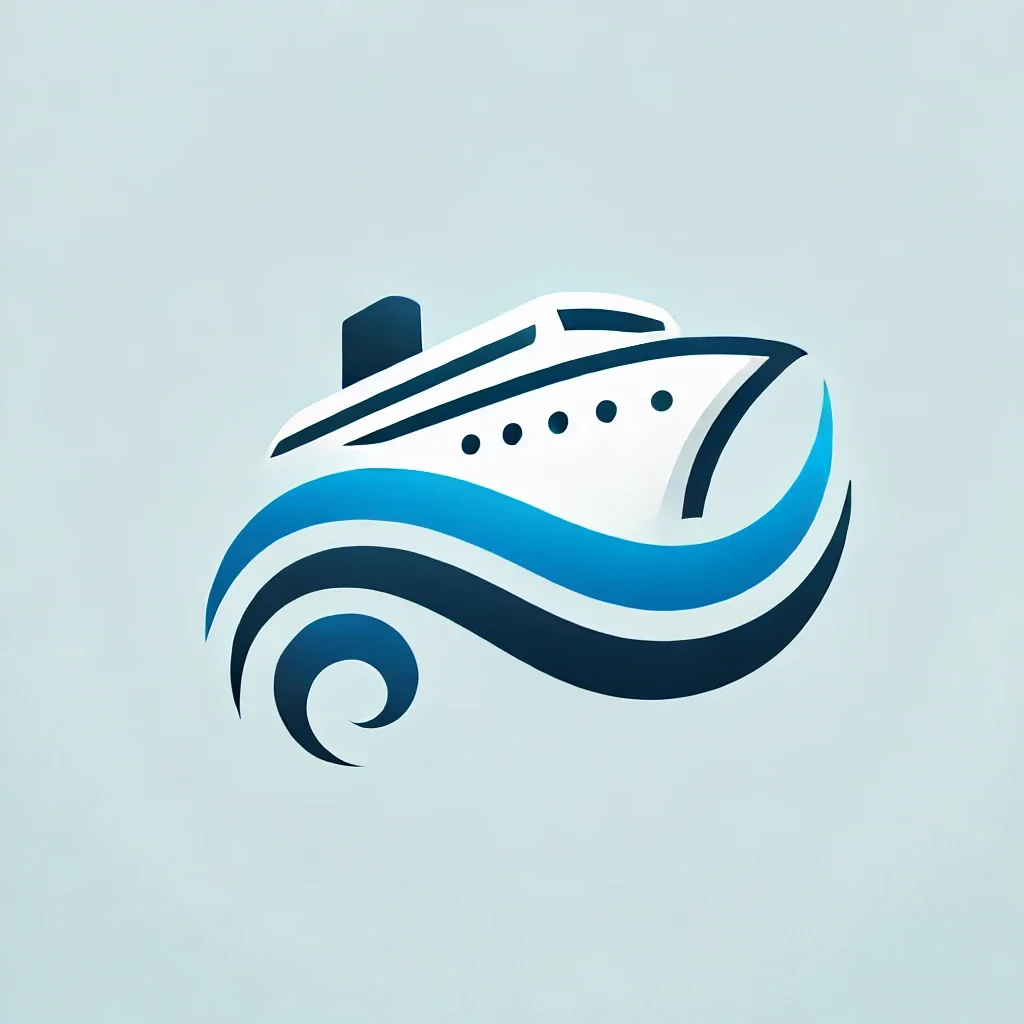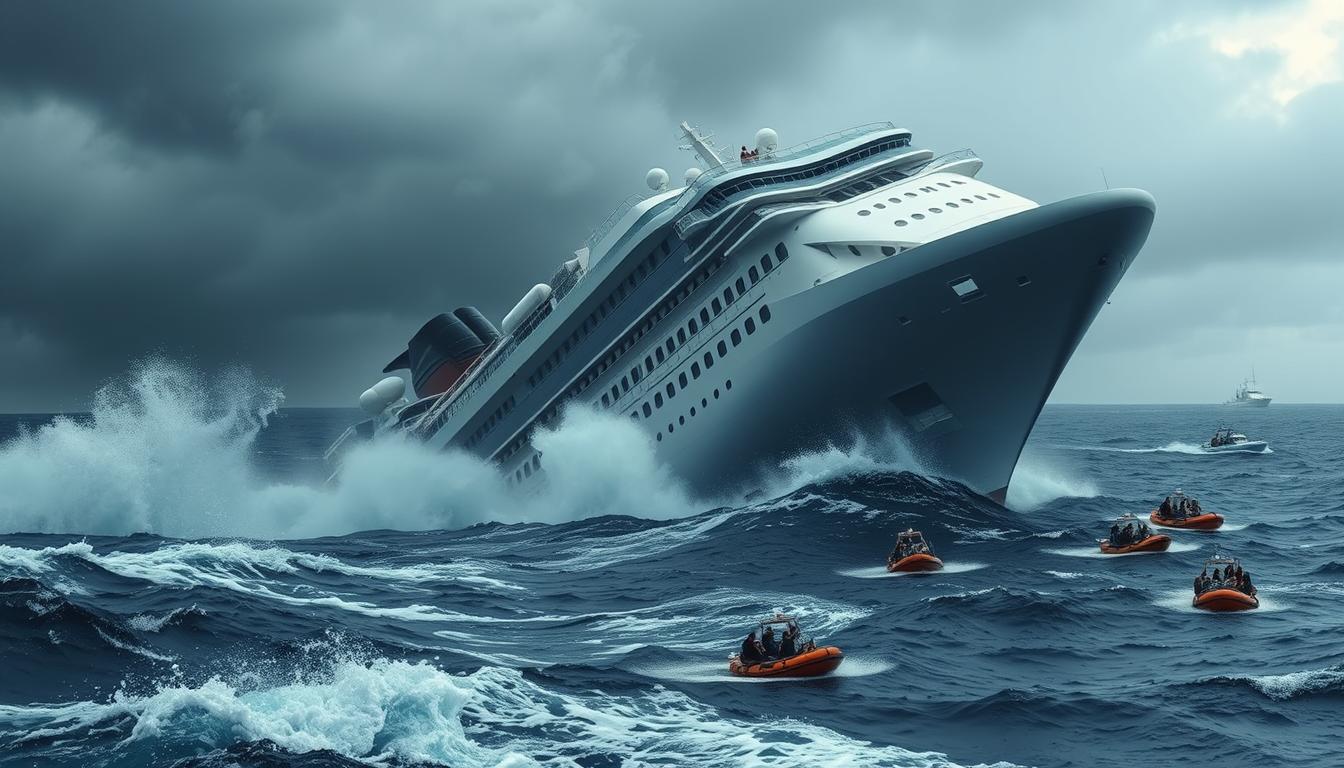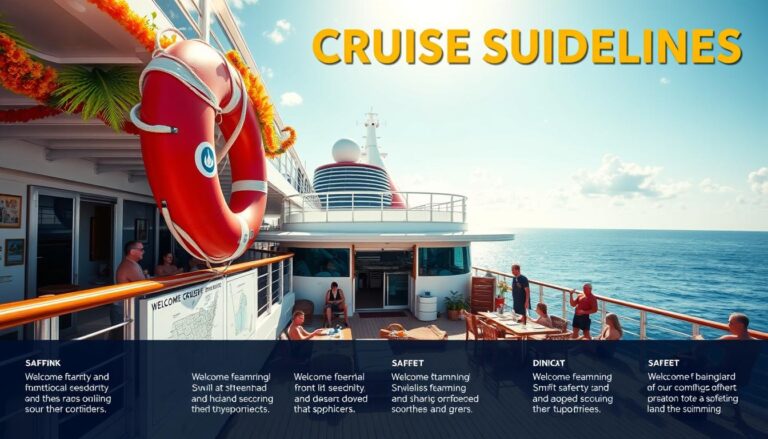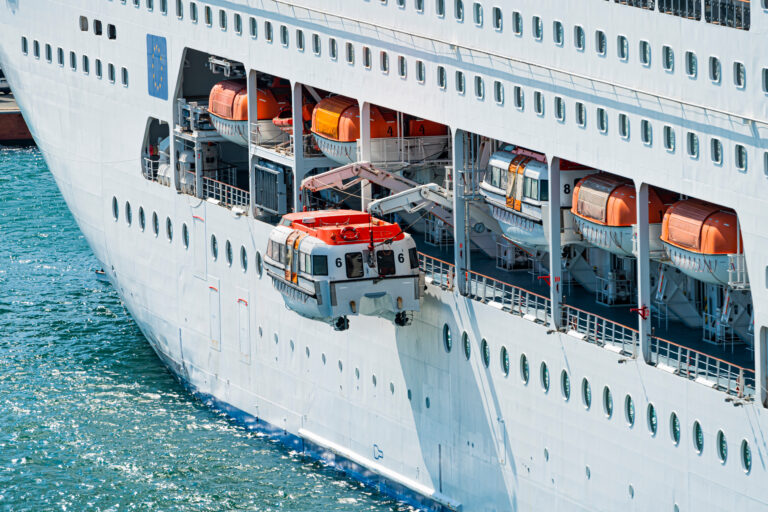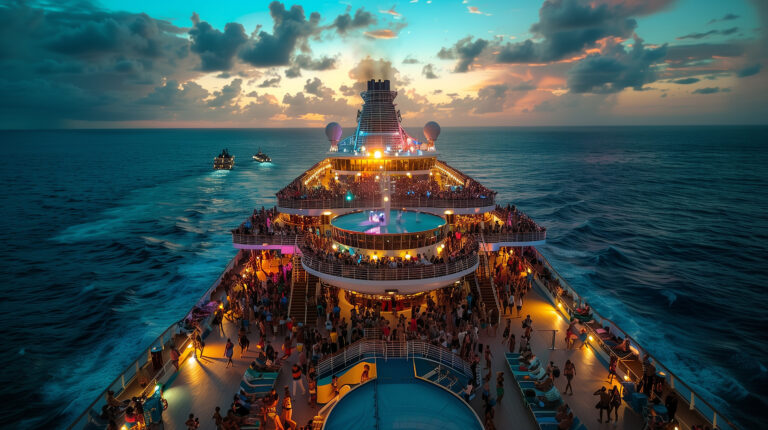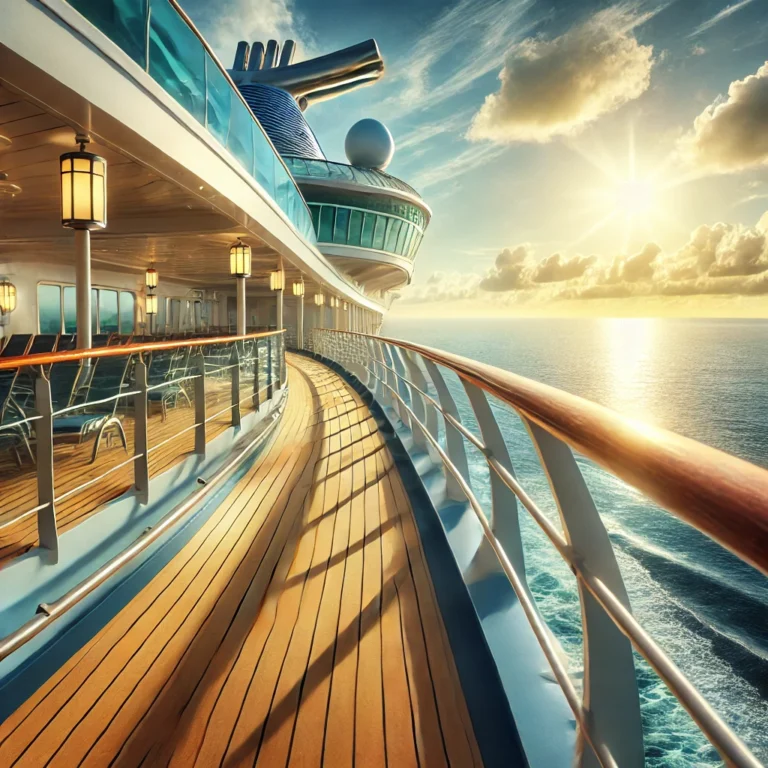How Many Cruise Ships Have Sunk? Every Cruise Ship Sinking Since 1912
The cruise industry is known for its luxury and safety. Yet, over a century, some cruise ships have met disaster. Since 1912, 26 ships, including river and ocean liners, have sunk. This shows how rare such events are today.
Most of these sinkings happened before 1940. This shows how much ship design, engineering, and safety have improved. The Titanic’s sinking in 1912 was a huge tragedy, with over 1,500 lives lost. But, the Costa Concordia’s sinking in 2012 was much smaller, with 32 lives lost. This shows how safety has kept getting better.
Table of Contents
How many cruise ships sink a year? Key Takeaways
- Since 1912, 26 cruise ships have sunk, including river cruise ships and ocean liners.
- Almost 2,000 lives have been lost in these incidents, with over half occurring before 1940.
- The sinking of the Titanic in 1912 resulted in over 1,500 deaths, making it one of the most infamous cruise ship disasters.
- The Costa Concordia sinking in 2012 resulted in 32 fatalities, one of the more recent large-scale cruise ship incidents.
- Advancements in ship design and safety features have significantly reduced the likelihood of cruise ship sinkings in modern times.
Modern Cruise Ship Safety Standards and Statistics
Cruise ship travel has become much safer over time. This is thanks to strict international rules and new technologies. The International Convention for the Safety of Life at Sea (SOLAS) sets the safety standards for cruise ships. It protects both passengers and crew.
Safety Features on Modern Vessels
Today’s cruise ships have many safety features. They include advanced fire systems, better hull designs, and new communication tools. These have greatly lowered the risk of accidents and deaths at sea.
- Cruise ship cabins have balconies with high railings and panels to stop people from falling overboard.
- Onboard security teams act like police, handling bad behavior and detaining rule-breakers.
- Cruise ships have enough lifeboats for every passenger, as required by SOLAS.
How Many Cruise Ships sink a Year: Accident Prevention Technologies
Cruise ships use advanced technologies to prevent accidents. They have radar, weather monitoring, and automated navigation tools. These help crews deal with potential dangers, making cruise travel safer.
“Cruise ship disasters are rare, like plane crashes, with big media coverage making people more scared of cruising.”
Even though big incidents like the Costa Concordia disaster happen, the cruise industry’s safety record is strong. With a 99% survival rate in major accidents, cruise travel is now very safe for passengers.
How Many Cruise Ships Sink a Year: Historical Data Analysis
Cruise ship sinkings are very rare. Over the last 100 years, only 24 full-size cruise ships have sunk worldwide. Thanks to better safety rules and technology, these incidents have become much less common.
In the last 50 years, there have been 15 cruise ship sinkings. Only 9 of these resulted in deaths of passengers. This means, on average, a cruise ship sinks with casualties about once every 7 years.
The cruise ship sinking frequency and maritime incident statistics show how well safety has improved. Most of the old ship sinkings happened before 1940. Back then, safety standards were much lower than today.
| Time Period | Cruise Ship Sinkings | Sinkings with Fatalities |
|---|---|---|
| Pre-1940 | 9 | 6 |
| 1940-1990 | 6 | 3 |
| 1990-Present | 9 | 6 |
The data clearly shows a big drop in cruise ship sinking frequency. Modern ships are built to handle even the worst situations. While any loss of life is sad, the maritime incident statistics prove that cruising is very safe.
“The likelihood of a cruise ship sinking due to a catastrophic event is estimated to be about 1 in 6.25 million cruises.”
The Titanic Disaster and Its Impact on Maritime Safety
The sinking of the RMS Titanic on April 15, 1912, was a major maritime tragedy. It was a night when the ship hit an iceberg, causing over 1,500 deaths. This event led to big changes in cruise safety and rules.
The Fateful Night of April 14, 1912
The Titanic was on its way to New York City, seen as “unsinkable.” But hitting an iceberg damaged its hull, and it sank fast. The crew’s bravery couldn’t save everyone, as there weren’t enough lifeboats.
Changes in Maritime Law Post-Titanic
The Titanic disaster made the world act fast to improve safety. The International Convention for the Safety of Life at Sea (SOLAS) was created. It required enough lifeboats and 24-hour radio watch, among other safety steps.
Legacy and Lessons Learned
The Titanic’s sinking was a turning point in maritime history. It led to better safety in the cruise world. Today, thanks to the Titanic, we have advanced tech, better emergency plans, and a focus on safety for all.
“The Titanic disaster was a wake-up call for the maritime industry, leading to crucial improvements in safety standards and regulations that have saved countless lives.”
Notable Early 20th Century Cruise Ship Disasters
The early 20th century was marked by several major cruise ship disasters. These incidents showed the need for better safety at sea. The Empress of Ireland sank in 1914 after hitting another ship, killing 1,012 people. The Lusitania was torpedoed by a German U-boat in 1915, leading to 1,198 deaths.
In 1927, the Principessa Mafalda sank because of a broken propeller shaft. This disaster resulted in 314 lives lost. These tragedies highlighted the need for stricter safety rules and new technologies to protect those at sea.
“The loss of life in these early cruise ship disasters was a tragic wake-up call that spurred the maritime industry to prioritize safety and prevention of such catastrophic events in the future.”
These early 20th-century disasters taught the industry valuable lessons. They led to the creation of modern safety standards and better ship designs. The use of new technologies also became key to reducing maritime risks. As the industry grew, making safety a top priority became essential for a secure passenger experience.
How Many Cruise Ships sink a Year: World War Era Maritime Casualties (1914-1945)
The two world wars changed the maritime industry a lot. Many passenger ships were turned into military vessels. This led to a sad loss of life at sea, as ships were sunk by war, mines, and other dangers.
Military Conversions of Passenger Ships
In both World War I and World War II, many passenger ships were taken over by governments. They were used to carry troops, as hospitals, or as auxiliary cruisers. This made travel by sea riskier for everyone.
Notable Wartime Sinkings
The Britannic sank in 1916 after hitting a mine. The Empress of Britain was lost in 1940 to German attacks. These and other disasters caused a lot of deaths and disrupted travel at sea.
Impact on Civilian Maritime Travel
The wars made sea travel much riskier. Fewer ships were available for passengers, and many were used for the military. This made cruise ship travel less safe and less common. The lessons from these times helped make future ships safer.
| Statistic | Value |
|---|---|
| Merchant ships sunk during U-boat campaign (1914-1918) | Approximately 5,000 |
| Gross register tonnage lost due to German U-boat attacks (World War I) | Over 12 million |
| German U-boats sunk in initial campaign (1914) | 5 |
| Ships sunk by U-boats in 6 months prior to February 1915 | 19, totaling 43,000 GRT |
The wartime era saw many wartime maritime disasters and the conversion of passenger ships for military use. This greatly affected sea travel for civilians during that time.
How Many Cruise Ships sink a Year: Mid-Century Cruise Ship Accidents (1950-1980)
The mid-20th century saw many post-war maritime incidents and cruise ship collisions. These events pushed for better ship designs, evacuation plans, and safety tech. They showed the need for ongoing safety improvements.
The sinking of the Andrea Doria in 1956 was a major incident. It hit the Swedish ship Stockholm, causing 46 deaths. Yet, thanks to better safety steps, most passengers were saved quickly.
In 1961, the Bianca C sank due to an engine explosion. Amazingly, only one person died. This was thanks to good safety plans and the crew’s fast action.
These accidents in the mid-20th century drove big changes in the cruise industry. Ship makers and safety groups worked hard. They aimed to make ships safer and more secure for everyone.
| Incident | Year | Cause | Casualties |
|---|---|---|---|
| Andrea Doria Sinking | 1956 | Collision with Stockholm | 46 deaths |
| Bianca C Sinking | 1961 | Engine Room Explosion | 1 death |
The mid-20th century post-war maritime incidents and cruise ship collisions showed the need for constant safety improvement. They led to big steps forward in ship design, evacuation plans, and safety tech. This made the cruise industry safer and more secure for everyone.

“The tragedy of the Andrea Doria collision demonstrated the remarkable progress in maritime safety since the Titanic disaster, even as it highlighted the need for further improvements.”
How Many Cruise Ships sink a Year: Modern Era Cruise Ship Incidents (1980-2000)
The modern era of cruise ships saw big steps forward in safety. Even though fewer incidents happened, some cases showed the need for constant safety improvement.
Technology Advancements in Ship Safety
From 1980 to 2000, new safety tech was introduced. This included better communication, navigation, and crew training. These changes helped prevent and handle maritime incidents better.
Cruise lines also brought in new tech like automated emergency systems, enhanced fire detection, and advanced stabilization systems. These helped make ships safer for everyone on board. They also made rescue efforts more likely to succeed.
Notable Cases and Survival Stories
Even with these safety steps, some incidents still happened. The sinking of the Mikhail Lermontov in 1986 and the capsizing of the Oceanos in 1991 were two examples. They showed how important crew training and evacuation plans are.
In these cases, the crew’s fast action and the passengers’ help were key. The use of satellite-based communication and international rescue efforts also played a big role in saving lives.
The lessons from these incidents have shaped the cruise industry’s safety focus. Safety has become a top priority, making cruises safer and more enjoyable for everyone.
How Many Cruise Ships sink a Year: The Costa Concordia Disaster: A Modern Maritime Tragedy
On January 13, 2012, the Costa Concordia hit a rock off Giglio Island, Italy. This event, known as the Costa Concordia disaster, was a major maritime tragedy. It resulted in the deaths of 32 people out of 3,206 passengers and 1,023 crew.
The Costa Concordia, a 952-foot-long ship, was sailing in the Tyrrhenian Sea. The captain’s decision to do a “salute” maneuver brought the ship too close to shore. This mistake caused the ship to strike a rock, leading to damage and partial sinking.
The disaster led to a review of cruise ship safety. It also raised questions about the balance between unique cruise experiences and safety. The salvage of the Costa Concordia, the largest in history, cost $799 million and took years.
The Costa Concordia disaster reminds us of the importance of maritime safety. It shows the need for the cruise industry to always improve to prevent such tragedies.
| Cruise Ship | Passenger Capacity | Length | Fatalities |
|---|---|---|---|
| Costa Concordia | 3,780 | 952 feet | 32 |
| Titanic | Up to 2,435 | 882.5 feet | 1,517 |
The Costa Concordia disaster highlights the need for better cruise ship safety. By learning from this tragedy, the industry can work to prevent such disasters in the future.

“The Costa Concordia disaster was a wake-up call for the cruise industry, highlighting the need for greater accountability and a renewed focus on passenger safety.”
How Many Cruise Ships sink a Year: Recent Cruise Ship Incidents (2000-Present)
Maritime accidents have been rare and less severe in recent years. Yet, the cruise industry still faces challenges. These remind us of the need for safety improvements and emergency plans. Over the past 20 years, several incidents have shown the importance of constant safety checks.
In 2019, the Viking Sky had a major engine failure off Norway’s coast. This led to a dramatic rescue operation. It showed the industry’s ability to respond in emergencies. In 2020, the Orient Queen sank in Beirut Harbor due to a port explosion. Sadly, two crew members lost their lives.
These incidents highlight the cruise industry’s ongoing safety efforts. They focus on new technologies and better emergency plans. The goal is to keep passengers and crew safe and secure.
| Incident | Year | Casualties |
|---|---|---|
| Viking Sky engine failure | 2019 | No fatalities |
| Sinking of the Orient Queen | 2020 | 2 crew members |
The cruise industry is working hard to address contemporary maritime accidents and cruise industry safety measures. They are dedicated to the well-being of everyone on board. They aim to improve safety and emergency responses continuously.
Conclusion
The history of cruise ship safety has made big strides in the last century. The industry works hard to prevent maritime disasters and follows strict rules worldwide. Even though sad events like the sinking of the MS Estonia have happened, they are much rarer now.
Today’s cruise ships have many safety features. They have double hulls, stabilizers, and advanced navigation systems. Crews also get a lot of training to handle emergencies quickly and well.
The cruise industry keeps getting better at safety. It uses new technologies, improves rules, and cares a lot about keeping everyone safe. This means cruise travel will only get safer in the future. People can feel safe knowing the industry is working hard to protect them.
FAQ
How many cruise ships have sunk since 1912?
How often do cruise ships sink with casualties?
What are the modern safety standards for cruise ships?
What was the impact of the Titanic disaster on maritime safety?
What were some notable early 20th century cruise ship disasters?
How did World Wars impact cruise ship safety and operations?
What were some notable mid-20th century cruise ship accidents?
How did modern technology impact cruise ship safety?
What was the impact of the Costa Concordia disaster?
What are some recent cruise ship incidents?
Source Links
- How Many Cruise Ships Have Sunk in History?
- How Many Cruise Ships Have Sunk? Every Cruise Ship Sinking Since 1912
- How Many Cruise Ships Have Sunk? Date & Reasons 2024
- Cruise ship officer shares risk of a cruise ship sinking
- Are cruises safe? What you need to know about cruise ship security – The Points Guy
- Cruise Ship Deaths – Annual Statistics, Causes and Real Examples – Emma Cruises
- Cruise ship
- Cruise Ship Sinking Statistics Statistics: Market Data Report 2024
- How do cruise lines track their ships across the globe? AIDA and Costa offer insight –
- They Said It Couldn’t Sink
- Titanic | History, Sinking, Rescue, Survivors, Movies, & Facts | Britannica
- Titanic
- Ship – Passenger Liners, 20th Century | Britannica
- List of shipwrecks in 1900
- SS Morro Castle (1930)
- U-boat campaign
- The Economic Weapon: The Rise of Sanctions as a Tool of Modern War 9780300262520 – DOKUMEN.PUB
- Bermuda’s History from 1952 to 1999
- Global Modeling and Assimilation Office Research Site
- Bryan M Kuderna | Broker World
- Costa Concordia disaster | Collision, Rescue, Salvage, & Facts | Britannica
- Costa Concordia
- List of maritime disasters in the 21st century
- How Many Cruise Ships Have Sunk?
- MSC Seaside accidents and incidents
- Carnival Elation accidents and incidents
- The sinking of MS Estonia: 30 years of unanswered questions
- Are Cruises Safe from Sinking? – Cruise Solutioner
- 50 Common Cruise Questions and Myths Answered: Your Expert Guide to Cruising | Magical Traveller
